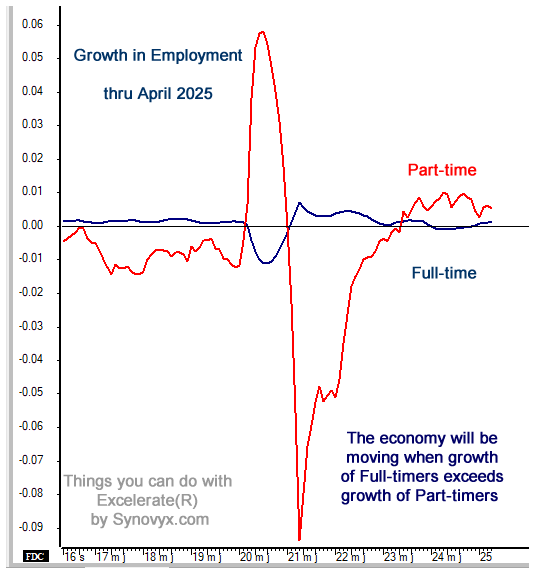Analyzing Employment Trends: Full-Time vs. Part-Time Work
Within the Non-Farm Payrolls (NFP) Report, two key employment categories—full-time employment and part-time employment for economic reasons—offer valuable insight into the state of the labor market. By analyzing their respective growth trends and comparing their slopes, we can better understand shifts in employer confidence and economic stability.
Historically, economic downturns have occurred when part-time job growth surpasses full-time employment growth, reflecting caution among employers hesitant to commit to permanent positions. Conversely, economic recovery typically begins when full-time employment accelerates faster than part-time hiring, signaling renewed confidence in long-term business prospects.
Current Trends and What They Mean
- Full-time employment has been growing steadily for the past six months and increasing consistently for 11 consecutive months.
- Part-time job growth, though still exceeding full-time growth, has declined over the last two months.
- This shift suggests a potential turning point in labor market trends. While employers have not fully transitioned to long-term hiring, the upward momentum in full-time job growth indicates gradual economic stabilization.
Looking Ahead
If this pattern continues, we may see full-time employment overtaking part-time growth, solidifying economic recovery. Monitoring sector-specific hiring trends—such as whether certain industries are driving full-time job gains—can provide additional insight into the strength of this shift. Wage growth and labor force participation are also critical factors to watch.

